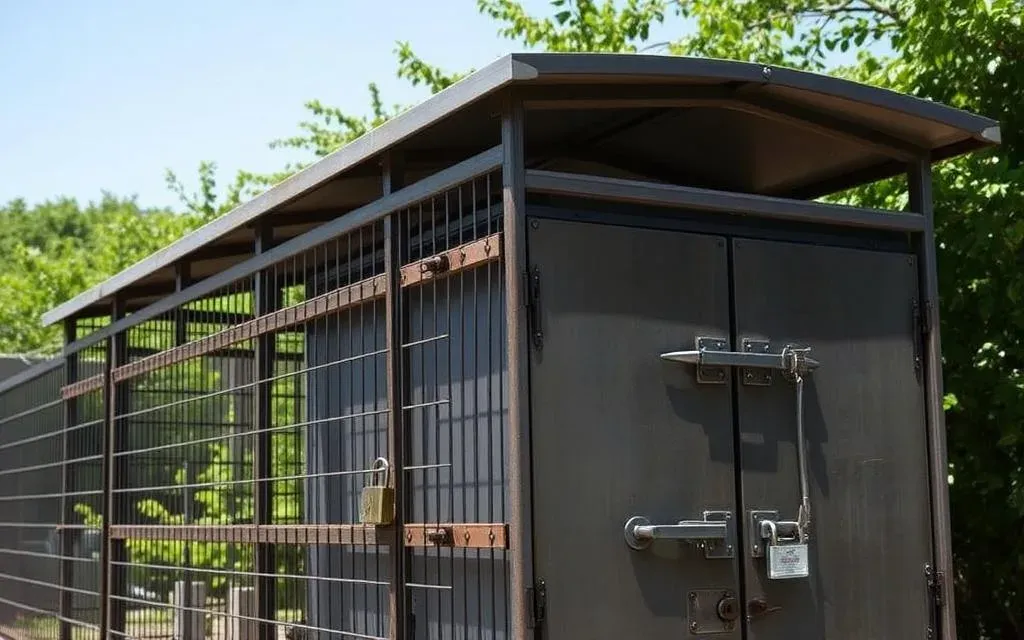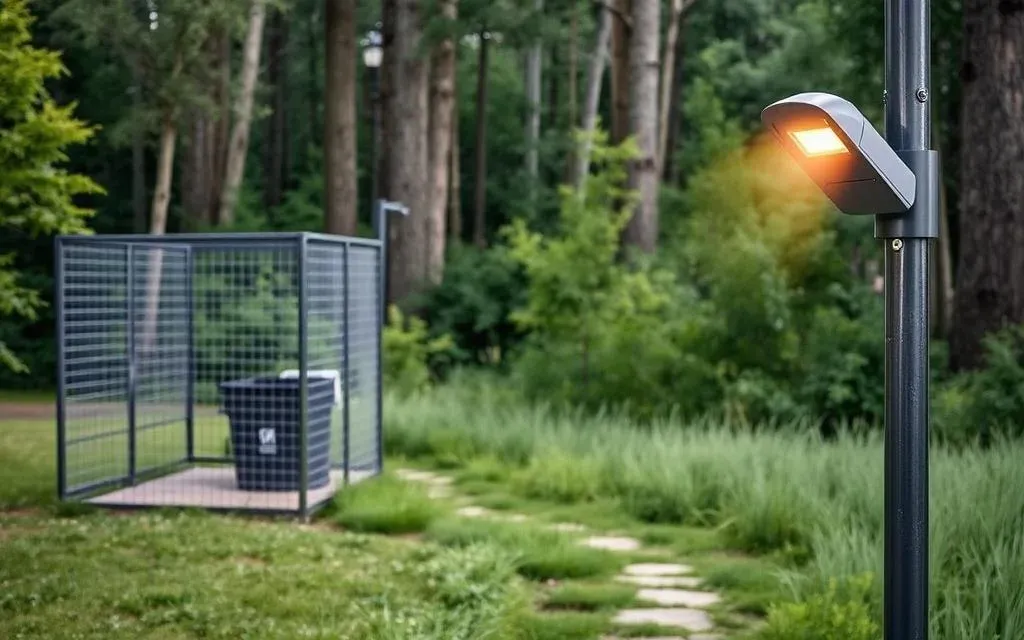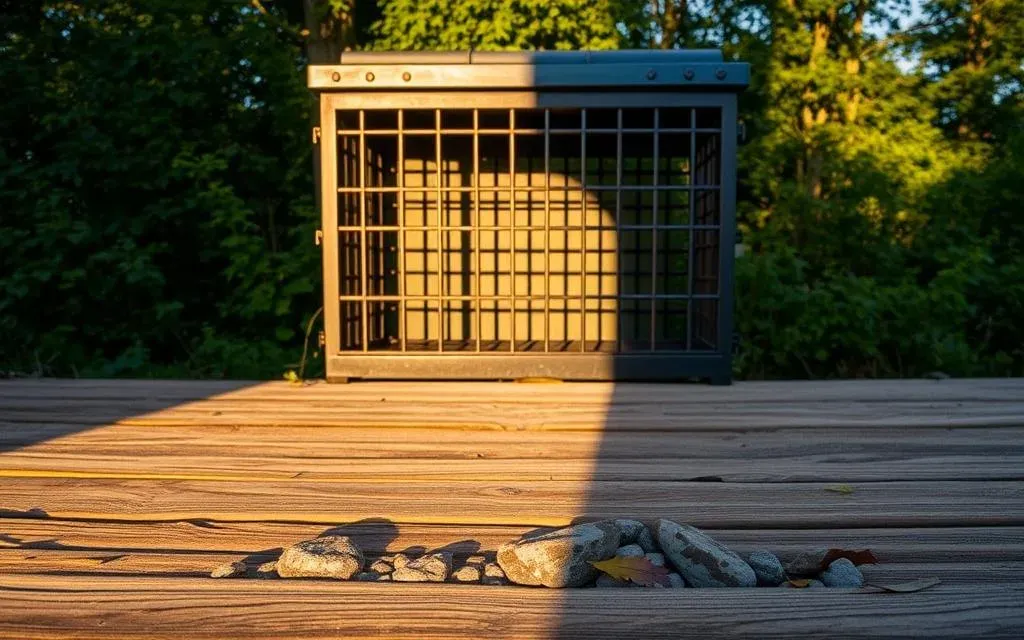Have you ever wondered why raccoons and other wildlife seem to target your garbage? Unsecured trash can attract unwanted visitors, creating a mess and posing health risks. These animals are drawn to the smell of food, turning your home into their next meal spot.
Leaving garbage exposed not only invites raccoons but also increases the chance of disease transmission. Simple steps, like using bungee cords to secure lids or moving trash indoors, can make a big difference. These small changes help protect your property and keep your neighborhood clean.
In this guide, we’ll explore effective ways to deter wildlife from rummaging through your trash. From practical tips to real-life examples, you’ll learn how to maintain a safer, cleaner environment. Let’s take the first step toward a solution today.
Table of Contents
ToggleUnderstanding the Wildlife Threat to Our Trash
Unsecured trash can be a magnet for wildlife, but why? The answer lies in the strong odors emitted by food waste. These smells attract raccoons, opossums, and other critters, turning our garbage into a feeding ground.
Plastic trash cans, while common, often absorb odors over time. This makes them even more appealing to animals. Metal cans, on the other hand, are less likely to retain smells, offering a better way to keep animals at bay.
Recognizing the Dangers of Unsecured Garbage
Leaving trash exposed doesn’t just create a mess. It poses serious health risks. Animals like raccoons can carry diseases such as rabies, which can spread to humans and pets.
Improper storage methods also lead to pest infestations. Flies, rodents, and other pests are drawn to the same food waste that attracts larger animals. This escalates the problem, making it harder to control.
Impact on Our Community Health and Safety
Wildlife intrusion isn’t just a personal issue—it affects the entire community. Scattered trash can pollute neighborhoods and harm local ecosystems. It also increases the risk of disease transmission among residents.
By adopting proper preventive measures, we can safeguard both our waste and our community’s health. Simple steps, like securing lids with bungee cords or using ammonia to mask odors, can make a significant difference.
| Feature | Plastic Trash Can | Metal Trash Can |
|---|---|---|
| Odor Retention | High | Low |
| Durability | Moderate | High |
| Animal Resistance | Low | High |
Key Preparatory Steps for Securing Our Garbage
Managing waste effectively starts with understanding what attracts wildlife to our garbage. By addressing the root causes, we can prevent unwanted visitors and maintain a cleaner environment.
Minimizing Food Waste and Reducing Odors
Food waste is the primary attractant for animals like raccoons. Proper disposal methods can significantly reduce odors. Freezing scraps until garbage day is one effective way to control smells.
Using a garbage disposal for food waste minimizes the amount of trash that can attract critters. Additionally, cleaning trash cans regularly with ammonia helps mask lingering odors.

Choosing the Right Trash Can Materials
The material of your trash can plays a crucial role in deterring animals. Plastic cans often absorb odors, making them more appealing to wildlife. Metal cans, however, are less likely to retain smells and are more durable.
Here’s a comparison of plastic and metal trash cans:
| Feature | Plastic Trash Can | Metal Trash Can |
|---|---|---|
| Odor Retention | High | Low |
| Durability | Moderate | High |
| Animal Resistance | Low | High |
Switching to a metal garbage can is a simple yet effective step to reduce the risk of animal intrusions. Pairing this with secure lids ensures your trash remains inaccessible to wildlife.
How to Keep Wild Animals Away from Trash: Effective DIY Methods
Effective DIY solutions can help us secure our garbage and deter unwanted wildlife. Simple, cost-effective measures can make a big difference in keeping critters away from our waste. Let’s explore practical steps to protect our trash and maintain a cleaner environment.
Securing Lids with Bungee Cords or Heavy Objects
One of the easiest ways to keep animals out of our trash is by securing the lid. Bungee cords are a great tool for this. They can tightly hold the lid in place, preventing raccoons and other creatures from prying it open.
For added security, place heavy objects like bricks or cinder blocks on top of the lid. This extra weight ensures the trash can stays closed, even in windy conditions. These methods are affordable and highly effective for long-term use.
Utilizing Indoor Storage and Safe Placement
Moving our trash indoors is another effective strategy. Storing garbage in a garage or shed eliminates access for wildlife. If indoor storage isn’t possible, place the trash can in a secure, well-lit area.
Motion-sensor lights can also deter nocturnal animals. By reducing the smell of food waste and keeping the area bright, we can significantly lower the risk of animal intrusions. These steps ensure our trash remains safe and our property stays clean.
Innovative Solutions: Lights, Repellents, and Alternative Measures
Innovative methods can transform how we protect our garbage from persistent wildlife. By combining technology and natural deterrents, we can create a secure environment for our trash. Let’s explore some advanced strategies to keep critters at bay.
Using Motion-Sensor Lights to Deter Wildlife
Motion-sensor lights are a game-changer for deterring nocturnal animals. When a raccoon or squirrel approaches, the sudden brightness startles them, causing them to retreat. These lights are easy to install and provide an effective, non-invasive solution.

Applying Natural Repellents and Odor Masking Techniques
Natural repellents like diluted ammonia or mothballs can mask the smell of food waste. Animals rely on their sense of smell to locate garbage, so reducing odors is key. These methods are safe, affordable, and environmentally friendly.
Upgrading to Locking Metal Cans
Locking metal cans offer an extra layer of security. Unlike plastic, metal doesn’t retain odors, making it less appealing to wildlife. The locking mechanism ensures that even the most determined raccoon can’t access the trash. This upgrade is a long-term investment in waste management.
Additional Tips for Long-Term Wildlife Deterrence
Maintaining a clean and secure environment requires consistent effort and smart strategies. By adopting these supplemental methods, we can ensure long-term success in keeping wildlife away from our garbage.
Frequent cleaning of trash cans is essential. Lingering smells attract animals like raccoons and squirrels. Use ammonia or a vinegar solution to eliminate odors and make the area less appealing.
Scheduled trash disposal practices also help. Avoid leaving waste out for extended periods. Staggering pickup times ensures garbage doesn’t sit too long, reducing the risk of attracting critters.
Balancing indoor storage with proper ventilation is key. While storing trash indoors keeps it secure, ensure the area is well-ventilated to prevent secondary pest problems like flies or rodents.
- Regularly check the integrity of lids, locks, and storage positions.
- Use eco-friendly plastic or metal garbage cans based on seasonal needs.
- Install motion-sensor lights to deter nocturnal animals.
Community examples and expert recommendations reinforce these strategies. By staying proactive, we can protect our homes and neighborhoods from unwanted wildlife intrusions.
Conclusion
Protecting our garbage from wildlife is essential for a cleaner, safer environment. By securing trash during the day and night, we can prevent animals from accessing it. Small changes, like using a sturdy trash can or managing food scraps properly, make a big difference.
Every community benefits from adopting these proven methods. Consistent implementation ensures long-term success. Regularly monitoring our trash security measures helps maintain a wildlife-free space.
Let’s work together to safeguard our homes and neighborhoods. Every tip shared here contributes to a healthier, more secure environment for all.
FAQ
What materials work best for trash cans to deter animals?
Metal cans with locking lids are the most effective. They are durable and harder for critters like raccoons or squirrels to break into compared to plastic containers.
How can we reduce odors that attract wildlife?
Minimize food waste by composting or using sealed containers. Regularly clean bins with ammonia or vinegar to mask smells that lure animals.
Are motion-sensor lights useful for keeping animals away?
Yes, motion-sensor lights can scare off nocturnal creatures like raccoons. Placing them near garbage areas adds an extra layer of protection.
What’s the best way to secure trash can lids?
Use bungee cords or heavy objects like bricks to keep lids tightly closed. This prevents animals from prying them open.
Can natural repellents help deter wildlife?
Yes, substances like cayenne pepper or ammonia can repel animals. Sprinkle them around the trash area to discourage unwanted visitors.
Should we store trash indoors to avoid animals?
If possible, keep waste in a garage or shed until collection day. This reduces the chances of attracting wildlife to your outdoor bins.
How often should we clean our trash cans?
Clean bins at least once a month to remove lingering odors. This helps prevent animals from associating the area with food sources.
Are there specific times to put out trash to avoid animals?
Place bins out on the morning of collection day rather than the night before. This minimizes the time they’re exposed to wildlife.







